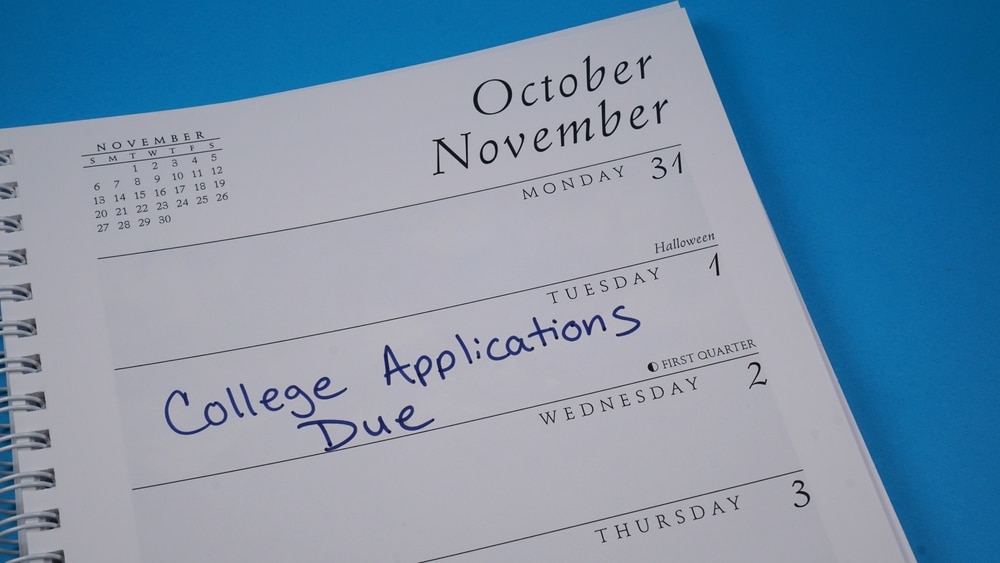Early Action vs Early Decision
When you’re applying to college, understanding the difference between Early Action and Early Decision is crucial. These are two paths you can take, and each has its own set of rules. Think of it as choosing your route in a game – each choice leads to a different adventure. Understanding between Early Action vs Early Decision is one of the first big choices you’ll make in your college application journey.
Knowing the differences between EA and ED can really shape your college application strategy. Each has benefits and drawbacks. For instance, EA gives you more flexibility and options, while ED is a commitment to your dream school.
In this guide, we’ll look more closely at Early Action vs Early Decision. We’ll see how they work, what they offer, and how you can decide which one is best for you. Whether you’re all in for your dream school or keeping your options open, understanding these choices will help you make the best decision for your future. Let’s explore these paths together!
What is Early Action?
When you’re looking at Early Action vs Early Decision, it’s key to understand what each one means. Let’s start with Early Action (EA). It’s one of the routes you can take when applying to college. Think of EA as your chance to jump ahead in the college application race but with less pressure.
Detailed Description of Early Action
EA allows you to submit your college applications early, usually by November. The cool part? You get your admission results early too, often around January. But unlike Early Decision, EA isn’t a binding agreement.
This means if you get accepted, you don’t have to commit to the college right away. You have until May 1st to decide. This gives you plenty of time to weigh your options, compare financial aid offers, and choose the best college for you.
Types of Early Action: Restricted, Unrestricted
There are two main types of Early Action: Restricted Early Action (REA) and Unrestricted Early Action.
Restricted Early Action: This is a bit stricter. It means when you apply to a college under REA, you agree not to apply early (either EA or ED) to any other colleges. However, it’s still non-binding – you can still choose not to attend if you get accepted. Schools like Stanford and Harvard offer REA.
Unrestricted Early Action: This is more flexible. You can apply to as many colleges as you want under their Early Action programs. It gives you the freedom to explore your options and compare offers. Colleges like MIT and the University of Chicago offer this kind of Early Action.
What is Single-Choice Early Action?
Single-Choice Early Action and Restricted Early Action are essentially the same. Both terms are used to describe an application process where a student applies early to one college and agrees not to apply early to any other institution. This kind of application plan shows the college that it is the student’s top choice for early application. However, unlike Early Decision, these plans are non-binding, meaning if accepted, the student still has until the regular decision deadline to decide whether to attend.
The terms are often used interchangeably, and the choice of term depends on the college. The key aspect of both is that they restrict students from applying early (whether through Early Action or Early Decision) to other colleges while allowing them the flexibility to consider other options and financial aid offers before making a final commitment.
Advantages and Disadvantages
Advantages
One big advantage of Early Action is that you get to hear back from colleges sooner, which can reduce stress and give you more time to make decisions. Also, since EA is non-binding, it offers the flexibility to compare acceptances and financial aid offers from different colleges. This is a big contrast to Early Decision, where your choice is locked in if you’re accepted.
Applying EA also shows colleges that you’re enthusiastic and organized about your future, which can be a plus in their eyes. It’s a way to demonstrate interest without the binding commitment of Early Decision.
Disadvantages
However, Early Action also has some disadvantages. The application deadlines are earlier, so you have to get your act together sooner – this means getting your essays, recommendations, and tests done early.
Also, because EA isn’t binding, some colleges might reserve a big portion of their acceptance spots for students who’ve shown commitment through Early Decision. This doesn’t mean you have less chance of getting in, but it’s something to keep in mind.
Examples of Colleges Offering Early Action
Many colleges offer Early Action. Each college has its own specific rules and deadlines, so if you’re interested in applying EA, make sure you research and understand each college’s process. Below are some of the top school in the US offering Early Action:
Schools from the Top 50 National Universities Offering Early Action for the Class of 2028
| National Universities | Deadline | Type |
| Princeton University | November 1, 2023 | Single- Choice Early Action |
| Harvard University | November 1, 2023 | Restrictive Early Action |
| Massachusetts Institute of Technology | November 1, 2023 | Early Action |
| Yale University | November 1, 2023 | Single- Choice Early Action |
| Stanford University | November 1, 2023 | Restrictive Early Action |
| University of Chicago | November 1, 2023 | Early Action |
| California Institute of Technology | November 1, 2023 | Restrictive Early Action |
| University of Notre Dame | November 1, 2023 | Restrictive Early Action |
| University of Southern California | November 1, 2023 | Early Action |
| Georgetown University | November 1, 2023 | Early Action |
| University of Michigan–Ann Arbor | November 1, 2023 | Early Action |
| Wake Forest University | November 15, 2023 (Rolling basis) | Early Action |
| University of Virginia | November 1, 2023 | Early Action |
| Georgia Institute of Technology | EA1: October 16, 2023
EA2: November 1, 2023 |
Early Action I and II |
| University of North Carolina–Chapel Hill | October 15, 2023 | Early Action |
| Case Western Reserve University | November 1, 2023 | Early Action |
| Northeastern University | November 1, 2023 | Early Action |
| Tulane University | November 15, 2023 | Early Action |
| University of Wisconsin–Madison | November 1, 2023 | Early Action |
| Villanova University | November 1, 2023 | Early Action |
| University of Illinois–Urbana-Champaign | November 1, 2023 | Early Action |
| University of Texas–Austin | November 1, 2023 | Early Action |
Schools from the Top 50 National Liberal Arts Colleges Offering Early Action for the Class of 2028
|
National Liberal Arts Colleges |
Deadline |
Type |
| University of Richmond | November 1, 2023 | Early Action |
| Macalester College | November 1, 2023 | Early Action |
| Colorado College | November 1, 2023 | Early Action |
| Soka University of America | November 1, 2023 | Early Action |
| The University of the South | December 1, 2023 | Early Action |
| Union College | November 1, 2023 | Early Action |
| Berea College | EA 1: November 15, 2023
EA 2: January 31, 2024 |
Early Action I and II |
| DePauw University | EA 1: November 1, 2023
EA 2: December 15, 2023 |
Early Action I and II |
| Furman University | December 1, 2023 | Early Action |
Schools from the Top 50 Public Schools Offering Early Action for the Class of 2028
| Deadline |
Type |
|
| University of Michigan–Ann Arbor | November 1, 2023 | Early Action |
| University of Virginia | November 1, 2023 | Early Action |
| Georgia Institute of Technology | EA1: October 16, 2023
EA2: November 1, 2023 |
Early Action I and II |
| University of North Carolina–Chapel Hill | October 15, 2023 | Early Action |
| University of Wisconsin–Madison | November 1, 2023 | Early Action |
| University of Illinois–Urbana-Champaign | November 1, 2023 | Early Action |
| University of Texas–Austin | November 1, 2023 | Early Action |
| University of Georgia | October 15, 2023 | Early Action |
| Ohio State University–Columbus | November 1, 2023 | Early Action |
| Florida State University | October 15, 2023 | Early Action |
| Pennsylvania State University–University Park | November 1, 2023 | Early Action |
| Purdue University–West Lafayette | November 1, 2023 | Early Action |
| Rutgers University–New Brunswick | November 1, 2023 | Early Action |
| University of Maryland–College Park | November 1, 2023 | Early Action |
| University of Massachusetts–Amherst | November 5, 2023 | Early Action |
| Clemson University | October 15, 2023 | Early Action |
| Texas A&M University | October 15, 2023 | Early Action |
| University of Minnesota–Twin Cities | EA 1: November 1, 2023
EA 2: December 1, 2023 |
Early Action I and II |
| Virginia Tech | November 15, 2023 | Early Action |
| Binghamton University–SUNY | November 1, 2023 | Early Action |
| Indiana University–Bloomington | November 1, 2023 | Early Action |
| University at Buffalo–SUNY | November 15, 2023 | Early Action |
| Colorado School of Mines | November 1, 2023 | Early Action |
| Michigan State University | November 1, 2023 | Early Action |
| North Carolina State University–Raleigh | November 1, 2023 | Early Action |
| University of Iowa | November 1, 2023 | Early Action |
| Miami University–Oxford | EA 1: November 1, 2023
EA 2: December 1, 2023 |
Early Action I and II |
| Stony Brook University–SUNY | October 15, 2023 | Early Action |
| University of Delaware | November 1, 2023 | Early Action |
| New Jersey Institute of Technology | EA 1: November 15, 2023
EA 2: December 15, 2023 |
Early Action I and II |
| Auburn University | EA 1: September 15, 2023
EA 2: October 15, 2023 EA 3: November 15, 2023 EA 4: December 1, 2023 |
Early Action (Four Rounds) |
| Temple University | November 1, 2023 | Early Action |
| University of Colorado–Boulder | November 15, 2023 | Early Action |
| University of Oregon | November 1, 2023 | Early Action |
| University of South Carolina | October 15, 2023 | Early Action |
Debating between Early Action vs Early Decision, EA stands out as a flexible option. It’s great for students who want to get their applications done early but still want to keep their options open. With EA, you can apply to several schools early, get your results soon, and still have until May 1st to make your final decision. This way, you’re not rushed into choosing a college and have the freedom to explore different offers and opportunities.
What is Early Decision?
Choosing between Early Action vs Early Decision, Early Decision (ED) is a different path you can take. It’s important to understand what ED means, especially how it differs from Early Action.
In-depth Explanation of Early Decision
Early Decision (ED) is a type of application process offered by some colleges. When you apply Early Decision, you’re basically telling a college that it’s your top choice and if they accept you, you will definitely go there. It’s a bit like promising to go to a dance with someone before you know who else might ask you. This is different from Early Action, where you can apply early but aren’t tied down to go if you get in.
ED is like saying to a college, “You’re my first choice, and I’m committed to attending if accepted.” When you apply ED, you submit your application early, often around November. Just like Early Action, you get to hear back early, usually by December. But here’s the big difference: ED is a binding agreement. This means if the college accepts you, you are expected to enroll. Because of this commitment, you can only apply to one college under ED.
Binding vs. Non-binding Agreements
The big thing about Early Decision is that it’s a binding agreement. This means if the college accepts you, you have to go there (unless there’s a major issue, like you can’t afford it after seeing your financial aid package). This is different from regular admissions or Early Action, which are non-binding – you can choose to go or not even if you get accepted.
Advantages and Disadvantages
Advantages
One of the main advantages of Early Decision is that it can show a college you’re really serious about attending. Some colleges might like this because it helps them predict how many students will actually enroll. If you’re absolutely sure about a college and it’s your dream school, Early Decision can be a way to show that commitment.
Applying ED can also be less stressful once it’s over, because you find out earlier if you got in or not. This can save you from months of wondering where you’ll end up.
Disadvantages
However, there are some downsides to Early Decision. The biggest one is the lack of flexibility. If you apply ED and get accepted, you’re expected to go to that college. This means you can’t wait to hear back from other colleges or compare financial aid offers.
Also, if you change your mind after applying ED, it can be really hard to back out of the agreement. You should only apply ED if you’re 100% sure about the college.
Examples of Colleges with Early Decision Programs
Many colleges offer ED as part of their application process. Each college has its own rules and deadlines for ED, so if you’re thinking about applying this way, it’s important to do your research and know what you’re committing to. Here are the top schools in the US offering Early Decision:
Schools from the Top 50 National Universities Offering Early Decision for the Class of 2028
|
National Universities |
Deadline |
Type |
| Columbia University | November 1, 2023 | Early Decision |
| University of Chicago | ED1: November 1, 2023
ED2: January 2, 2024 |
Early Decision I and II |
| University of Pennsylvania | November 1, 2023 | Early Decision |
| Northwestern University | November 1, 2023 | Early Decision |
| Duke University | November 1, 2023 | Early Decision |
| Johns Hopkins University | ED1: November 1, 2023
ED2: January 2, 2024 |
Early Decision I and II |
| Dartmouth College | November 1, 2023 | Early Decision |
| Brown University | November 1, 2023 | Early Decision |
| Vanderbilt University | ED 1: November 1, 2023
ED2: January 1, 2024 |
Early Decision I and II |
| Cornell University | November 1, 2023 | Early Decision |
| Rice University | November 1, 2023 | Early Decision |
| Washington University in St. Louis | ED1: November 1, 2023
ED2: January 3, 2024 |
Early Decision I and II |
| Emory University | ED1: November 1, 2023
ED2: January 1, 2024 |
Early Decision I and II |
| Carnegie Mellon University | ED1: November 1, 2023
ED2: January 3, 2024 |
Early Decision I and II |
| Wake Forest University | ED I: Rolling
ED II: January 1, 2024 |
Early Decision I and II |
| University of Virginia | ED: November 1, 2023 | Early Decision |
| New York University | ED 1: November 1, 2023
ED 2: January 1, 2024 |
Early Decision I and II |
| Tufts University | ED1: November 1, 2023
ED2: January 4, 2024 |
Early Decision I and II |
| University of Rochester | ED1: November 1, 2023
ED2: January 5, 2024 |
Early Decision I and II |
| Boston College | ED1: November 1, 2023
ED2: January 2, 2024 |
Early Decision I and II |
| Boston University | ED 1: November 1, 2023
ED 2: January 4, 2024 |
Early Decision I and II |
| Brandeis University | ED 1: November 1, 2023
ED 2: January 2, 2024 |
Early Decision I and II |
| Case Western Reserve University | ED 1: November 1, 2023
ED 2: January 15, 2024 |
Early Decision I and II |
| College of William and Mary | ED 1: November 1, 2023
ED 2: January 5, 2024 |
Early Decision I and II |
| Northeastern University | ED 1: November 1, 2023
ED 2: January 1, 2024 |
Early Decision I and II |
| Tulane University | ED 1: November 1, 2023
ED 2: January 15, 2024 |
Early Decision I and II |
| Villanova University | ED 1: November 1, 2023
ED 2: January 15, 2024 |
Early Decision I and II |
| Lehigh University | ED 1: November 1, 2023
ED 2: January 1, 2024 |
Early Decision I and II |
Schools from the Top 50 National Liberal Arts Colleges Offering Early Decision for the Class of 2027
|
National Liberal Arts Colleges |
Deadline |
Type |
| Williams College | November 15. 2023 | Early Decision |
| Amherst College | November 1, 2023 | Early Decision |
| Swarthmore College | ED1: November 15, 2023
ED2: January 4, 2024 |
Early Decision I and II |
| Wellesley College | ED 1: November 1, 2023
ED 2: January 1, 2024 |
Early Decision I and II |
| Pomona College | ED 1: November 15, 2023
ED 2: January 8, 2024 |
Early Decision I and II |
| Bowdoin College | ED1: November 15, 2023
ED2: January 5, 2024 |
Early Decision I and II |
| Carleton College | ED1: November 15, 2023
ED2: January 15, 2024 |
Early Decision I and II |
| Claremont McKenna College | ED1: November 1, 2023
ED2: January 10, 2024 |
Early Decision I and II |
| Middlebury College | ED1: November 1, 2023
ED2: January 3, 2024 |
Early Decision I and II |
| Washington and Lee University | ED 1: November 1, 2023
ED 2: January 1, 2024 |
Early Decision I and II |
| Colby College | ED1: November 15, 2023
ED2: January 2, 2024 |
Early Decision I and II |
| Haverford College | ED1: November 15, 2023
ED2: January 5, 2024 |
Early Decision I and II |
| Smith College | ED 1: November 15, 2023
ED 2: January 1, 2024 |
Early Decision I and II |
| Grinnell College | ED 1: November 15, 2023
ED 2: January 5, 2024 |
Early Decision I and II |
| Hamilton College | ED 1: November 15, 2023
ED 2: January 3, 2024 |
Early Decision I and II |
| Vassar College | ED 1: November 15, 2023
ED 2: January 1, 2024 |
Early Decision I and II |
| Colgate University | ED 1: November 15, 2023
ED 2: January 15, 2024 |
Early Decision I and II |
| Davidson College | ED 1: November 15, 2023
ED 2: January 5, 2024 |
Early Decision I and II |
| Wesleyan University | ED 1: November 15, 2023
ED 2: January 1, 2024 |
Early Decision I and II |
| Bates College | ED 1: November 15, 2023
ED 2: January 10, 2024 |
Early Decision I and II |
| Harvey Mudd College | ED 1: November 15, 2023
ED 2: January 5, 2024 |
Early Decision I and II |
| University of Richmond | ED1: November 1, 2023
ED2: January 1, 2024 |
Early Decision I and II |
| Barnard College | November 1, 2023 | Early Decision |
| Macalester College | ED1: November 1, 2023
ED2: January 1, 2024 |
Early Decision I and II |
| Bryn Mawr College | ED 1: November 15, 2023
ED 2: January 1, 2024 |
Early Decision I and II |
| College of the Holy Cross | ED 1: November 15, 2023
ED 2: January 15, 2024 |
Early Decision I and II |
| Colorado College | ED1: November 1, 2023
ED2: January 15, 2024 |
Early Decision I and II |
| Kenyon College | ED 1: November 15, 2023
ED 2: January 15, 2024 |
Early Decision I and II |
| Mount Holyoke College | ED 1: November 15, 2023
ED 2: January 3, 2024 |
Early Decision I and II |
| Oberlin College | ED 1: November 15, 2023
ED 2: January 2, 2024 |
Early Decision I and II |
| Scripps College | ED 1: November 15, 2023
ED 2: January 8, 2024 |
Early Decision I and II |
| Bucknell University | ED 1: November 15, 2023
ED 2: January 15, 2024 |
Early Decision I and II |
| Pitzer College | ED 1: November 15, 2023
ED 2: January 1, 2024 |
Early Decision I and II |
| Franklin and Marshall College | ED 1: November 15, 2023
ED 2: January 15, 2024 |
Early Decision I and II |
| Lafayette College | ED 1: November 15, 2023
ED 2: January 15, 2024 |
Early Decision I and II |
| Occidental College | ED 1: November 15, 2023
ED 2: January 10, 2024 |
Early Decision I and II |
| Skidmore College | ED 1: November 15, 2023
ED 2: January 15, 2024 |
Early Decision I and II |
| Denison University | ED 1: November 15, 2023
ED 2: January 15, 2024 |
Early Decision I and II |
| The University of the South | ED 1: November 15, 2023
ED 2: January 15, 2024 |
Early Decision I and II |
| Union College | ED 1: November 1, 2023
ED 2: January 15, 2024 |
Early Decision I and II |
| Connecticut College | ED 1: November 15, 2023
ED 2: January 15, 2024 |
Early Decision I and II |
| DePauw University | ED 1: November 1, 2023
ED 2: December 15, 2023 |
Early Decision I and II |
| Dickinson College | November 15, 2023 | Early Decision |
| Furman University | ED 1: November 15, 2023
ED 2: January 15, 2024 |
Early Decision I and II |
Schools from the Top 50 Public Schools Offering Early Decision for the Class of 2027
| Deadline |
Type |
|
| University of Virginia | ED: November 1, 2023 | Early Decision |
| College of William and Mary | ED 1: November 1, 2023
ED 2: January 5, 2024 |
Early Decision I and II |
| University of Connecticut | ED1: November 15, 2023
ED2: January 15, 2024 |
Early Decision I and II |
| Miami University–Oxford | ED: November 1, 2023 | Early Decision |
When considering between Early Action vs Early Decision, it’s crucial to understand that ED is a significant commitment. It’s ideal if you have a clear first-choice college and are confident it’s the right fit for you financially and academically. By choosing ED, you’re telling that college, “I’m all in.” However, remember that this path leaves less room for comparison and change of mind. It’s a path best taken when you’re certain about your college choice.
Comparing Early Action and Early Decision
When you’re getting ready for college, understanding the difference between Early Action (EA) vs Early Decision (ED) is a big deal. It’s like choosing between two paths, each leading to your future college. Let’s break down these options and see how they stack up against each other.
Comparing Key Features
First, let’s put EA and ED side by side:
|
Feature |
Early Action (EA) |
Early Decision (ED) |
| Binding Agreement | No (You’re not obligated to attend) | Yes (You must attend if accepted) |
| Application Deadline | Usually by November | Usually by November |
| Admission Decision | Usually by January | Usually by December |
| Acceptance Response Deadline | By May 1st | Immediately upon acceptance |
| Applying to Other Schools | Yes (You can apply to multiple schools) | Limited (Only if not accepted by the ED school) |
| Ideal For | Students who want flexibility and more options | Students who are certain about their first choice |
Impact on Admission Chances
There’s a common belief that applying through Early Action or Early Decision can boost your chances of getting accepted.
Early Action
First, let’s talk about Early Action. When you apply to a college through Early Action, you’re basically telling the college, “Hey, I’m really interested in attending your school, and I’ve got my act together early.” This is a good thing because colleges like to see that you’re eager and organized. It’s kind of like showing up early to a party, and making a good impression right from the start.
But, applying Early Action doesn’t mean you’re definitely going to get in. It’s kind of like saying, “I’ve got a better chance of winning a game because I started practicing early,” but you still need to play well to win. Some colleges might give you a little boost in your chances because they’re happy to see how interested you are, but it’s not a sure thing.
One thing about Early Action is that it tends to attract a really wide range of students. Unlike Early Decision, which we’ll talk about next, it’s not just the super sure and super prepared students who apply this way. This means that the group of students you’re competing against might not be as intensely competitive. But remember, it’s still a mix of all kinds of students, so you have to make your application stand out.
Early Decision
Now, let’s move on to Early Decision. This one’s a bit different and can be a game-changer for some students. When you apply Early Decision to a college, you’re making a big statement. You’re saying, “This is my number one choice, and I’m so sure about it that if I get in, I’ll definitely attend.” Colleges really like this. It’s like promising to attend someone’s party if they invite you; the host is more likely to invite you because they know you really want to be there.
Because of this strong commitment, applying Early Decision can seriously increase your chances of getting accepted at some colleges. It’s a bit like a VIP pass; colleges know you’re not just casually interested, but you’re all in.
However, the catch is that the competition can be really tough. The other students who apply Early Decision are often very sure of themselves and their choices, just like you. They might have great grades, impressive activities, and strong essays, so you need to make sure your application is top-notch.
Both Early Action and Early Decision have their own perks and challenges. Early Action shows colleges that you’re interested and organized, and it might give you a bit of an advantage, but it’s not a sure bet. Early Decision, on the other hand, is like putting all your eggs in one basket, showing a college you’re fully committed to them.
It can significantly boost your chances, but be ready for some stiff competition. Whichever path you choose, make sure your application is the best it can be and reflects who you are. Remember, applying to college is a big step, but with the right approach, you can increase your chances of getting that much-awaited acceptance letter.
Financial Aid Considerations
Early Action
Imagine you’re shopping for the perfect pair of sneakers. You go to different stores, try on various pairs, and compare prices and styles before you make a decision. That’s kind of what applying Early Action to college is like.
When you apply EA, you’re not just telling one college that you want to come; you’re keeping your options open. This means you can apply to several colleges early, hear back from them around the same time, and then compare what each one offers you, especially in terms of financial aid.
Financial aid includes things like scholarships, grants, and other types of money that can help pay for college. It’s really important because it can make a big difference in how much you or your family have to pay.
By applying Early Action, you can get offers from multiple colleges and then sit down with your family to figure out which one makes the most financial sense. Maybe one college offers you a great scholarship, or another one has a special program that’s worth the cost. With EA, you get to look at all these offers side by side, kind of like comparing those sneakers, and then make the best decision for you.
Early Decision
Now, let’s talk about Early Decision. This one’s a bit different and can be a little trickier when it comes to money. Going back to our sneaker analogy, applying Early Decision is like seeing a pair of sneakers you love, buying them without looking at any other store, and agreeing not to return them no matter what. When you apply ED to a college, you’re saying, “This is my first choice, and if I get in, I’m definitely going to attend.” It’s like making a promise.
The thing with Early Decision is that it doesn’t really allow you to compare financial aid packages from different colleges. You’re basically agreeing to attend that college and accept whatever financial aid they offer, without knowing what other colleges might have given you. This can be a bit risky, especially if you’re looking for the best financial deal. If you apply ED and get accepted, you’re committed to that college, even if another college might have offered you more money.
So, if you’re someone who needs to think about the cost of college and wants the flexibility to compare different financial aid offers, Early Decision might feel limiting. It’s a great option if you’re absolutely sure about a college and less worried about comparing financial aid packages. But if you’re like most students and money is a big factor in your decision, Early Action gives you more freedom to choose the best financial option for you and your family.
Choosing between Early Action vs Early Decision, is all about your personal situation. When you’re applying to college, think about what’s most important to you. If you want the ability to compare financial aid offers and choose the best deal, Early Action is a great choice. It lets you keep your options open and make a decision after seeing what different colleges can offer you.
On the other hand, if you have your heart set on one specific college and are less concerned about comparing financial aid, Early Decision might be the way to go. Just remember, with ED, you’re making a commitment, so be sure it’s what you really want. Applying to college is a big step, but understanding your options can help you make the best choice for your future.
Strategies for Deciding Between EA and ED
Deciding between Early Action vs Early Decision is a significant step, and there are several strategies to help you make the best choice. Let’s dive into these strategies, breaking them down into simple words and concepts.
Assessing Personal and Academic Readiness
One of the first things to consider in the Early Action vs Early Decision debate is where you stand personally and academically. Early Decision is a big commitment. If you choose ED, you’re saying that if the college accepts you, you’re definitely going to attend. So, you need to be absolutely sure about the college and your readiness to commit. This means being confident not just about the school itself but also about the major you want to study, the campus life, and even the location.
On the other hand, Early Action is less about commitment and more about showing interest early on. When you apply EA, you’re not bound to attend if accepted. This option is great if you want to keep your choices open. Maybe you’re still deciding between a few colleges, or you’re unsure about your major. If that sounds like you, then Early Action might be the way to go.
Understanding the Commitment Involved in ED
Understanding the commitment of Early Decision is crucial. This isn’t just about saying “yes” to a college earlier than usual. When you go the ED route, you’re entering into an agreement. If the college says they want you, you’re agreeing to withdraw all other applications and attend that college. This is why it’s so important to be 100% sure that this college is where you want to be. Think about it like choosing a teammate for a project; once you pick, you can’t change your mind.
The commitment of Early Decision also extends to financial aspects. Since you won’t be able to compare financial aid offers from different colleges, make sure you’ve discussed finances with your family and are comfortable with this aspect before choosing ED.
How to Leverage EA for Flexibility
The beauty of Early Action lies in its flexibility. Unlike Early Decision, Early Action doesn’t lock you into one choice. You can apply to multiple colleges EA, and this is where strategy comes in. By applying Early Action, you can compare acceptances and financial aid packages from different colleges. This gives you a great advantage. You can weigh your options, see what feels right, and then make an informed decision.
Think of Early Action like holding a few different offers in your hand and then choosing the best one. This flexibility is especially helpful if you’re still weighing different aspects of your future college – things like location, campus culture, or specific programs.
Consulting with College Counselors and Advisors
No matter if you’re leaning towards Early Action or Early Decision, talking to a college counselor or advisor is a smart move. These professionals have a lot of experience and can offer insights that you might not have considered. They can help you weigh the pros and cons of Early Action vs Early Decision based on your personal situation.
A counselor can guide you in assessing your academic readiness and help you understand the implications of your choice. They might also have information about the colleges you’re interested in, like how they view Early Action vs Early Decision applicants or details about specific programs that could influence your decision.
Choosing between Early Action vs Early Decision is a big step in your college application journey. It’s about understanding your own readiness and what each option entails. Early Decision is a significant commitment, best for when you’re absolutely sure about a college. Early Action, on the other hand, offers more flexibility, allowing you to compare different colleges and what they offer. And remember, consulting with a college counselor or advisor can provide valuable guidance in making this important decision.
As you navigate the Early Action vs Early Decision choice, take your time to reflect on what’s best for your future. This decision is a key part of your journey to finding the right college for you.
Application Tips for EA and ED Candidates
Navigating the college application process can be a bit like solving a puzzle, especially when you’re trying to figure out the differences between Early Action (EA) and Early Decision (ED). Each option has its own set of rules and deadlines, and understanding these can help you put together a strong application. Let’s dive into some application tips for EA and ED candidates, keeping in mind the unique aspects of each.
1. Preparing a Strong Application
Whether you’re going for Early Action or Early Decision, the strength of your application is key. Think of your application as your personal storybook that you’re sharing with colleges. It should showcase who you are, not just in terms of grades and test scores, but also your interests, experiences, and aspirations.
For both Early Action and Early Decision, focus on highlighting what makes you unique. This might be your passion for a particular subject, your involvement in community service, or your leadership in a school club. Remember, colleges are looking for well-rounded individuals, so don’t hesitate to show off your diverse talents and interests.
2. Meeting Earlier Deadlines: A Timeline Guide
One of the critical differences in the Early Action vs Early Decision process is the timeline. Both EA and ED have earlier deadlines than regular applications, usually in November of your senior year. This means you need to start preparing well in advance.
Here’s a simple timeline to guide you:
- Junior Year Spring: Start researching colleges and understand their EA and ED options. This is also a great time to start preparing for any standardized tests like the SAT or ACT.
- Summer Before Senior Year: Begin working on your college essays. This is also a good time to visit colleges if possible, as it can give you a clearer idea of where you might want to apply.
- Senior Year Fall: Finalize your list of colleges for EA and/or ED. Make sure your essays are polished, and start gathering your recommendation letters. Keep an eye on the deadlines – for most colleges, EA and ED applications are due by early November.
3. Crafting Compelling Personal Statements and Essays
Your personal statement and essays are your chances to speak directly to the admissions committee. For both Early Action and Early Decision applications, your essays should be thoughtful, well-written, and reflective of your personality and goals.
When writing your essays, focus on stories or experiences that have shaped you. This could be a challenge you’ve overcome, a significant achievement, or a moment of personal growth. The key is to be authentic and let your true self shine through. Remember, the admissions committee reads thousands of essays – make yours memorable by being genuine and reflective.
4. Obtaining Recommendations: Whom to Ask and When
Recommendation letters are a vital part of your EA and ED applications. They provide colleges with insights into your character and abilities from the perspectives of those who know you in an academic or professional setting.
Teachers, counselors, or coaches who know you well and can speak to your strengths and accomplishments are the best people to ask for recommendations. Choose individuals who have seen you grow and can provide specific examples of your work and character.
Timing is crucial, especially for Early Action and Early Decision applications. Ask for your letters well in advance, ideally at the end of your junior year or the very beginning of your senior year. This gives your recommenders plenty of time to write thoughtful, detailed letters.
Applying for Early Action or Early Decision requires careful planning and preparation. By understanding the differences between Early Action vs Early Decision, you can tailor your application to suit your choice. Start early, be organized, and put your best foot forward.
Remember, your application is your opportunity to showcase your unique story and why you’d be a great fit for the college of your choice. Whether you opt for the commitment of Early Decision or the flexibility of Early Action, a strong, well-prepared application is your ticket to standing out in the admissions process.
Financial Aid Considerations
When you’re a high school student looking at colleges, understanding how financial aid works can be as tricky as solving a complex math problem. This becomes even more important when you’re choosing between Early Action (EA) and Early Decision (ED). Let’s break down these financial aid considerations into simpler terms and see how they apply to Early Action vs Early Decision.
Understanding Financial Aid Implications of EA and ED
The first thing to know is that financial aid can come from different sources, like the government, the colleges themselves, or private organizations. It often includes loans, scholarships, and grants. The key difference between Early Action and Early Decision when it comes to financial aid is about how much room you have to compare and negotiate offers.
With Early Action, you’re not committed to one college right away. This means that if you get accepted to multiple colleges, you can compare the financial aid packages they offer. It’s like having different offers in hand and then choosing the best one. This comparison can be crucial, especially if you need to consider the cost as a big part of your decision.
On the other hand, Early Decision is more of a binding agreement. If you apply ED and get accepted, you’re expected to enroll at that college and withdraw your applications from other schools. This can be tricky with financial aid because you won’t have the chance to compare different offers. You’re basically accepting whatever financial aid package the college gives you without knowing if a better deal was possible elsewhere.
Negotiating Financial Aid Offers
Here’s something not everyone knows: sometimes, you can negotiate your financial aid package. This is more applicable if you’ve applied through Early Action. Since you have multiple offers, you can sometimes use a better offer from one college as leverage to negotiate a more favorable package from another.
If you’re going down this road, it’s important to be polite and respectful. Reach out to the financial aid office and explain your situation clearly. Provide them with the details of the other offers you’ve received and ask if there’s any possibility of adjusting your package. Remember, not all colleges will negotiate, but it doesn’t hurt to ask.
Scholarships and Grants: Exploring Options for EA and ED Students
Both EA and ED applicants should be proactive in seeking scholarships and grants. These are types of financial aid that you don’t have to pay back, which makes them really valuable.
Start by researching scholarships early. There are tons out there based on different criteria, like academic achievement, sports, community service, or even unique talents or interests. Use online resources, talk to your school counselor, and check out scholarship databases to find ones that fit you.
For both Early Action and Early Decision applicants, it’s also worth looking into whether the colleges you’re interested in offer specific scholarships or grants. Some colleges have special funds for certain majors, talents, or backgrounds.
When you’re considering Early Action vs Early Decision, it’s crucial to think about how each option affects your financial aid possibilities. Early Action gives you the flexibility to compare and potentially negotiate financial aid packages, whereas Early Decision means committing to one college’s offer.
Regardless of your choice, be proactive in seeking scholarships and grants. Remember, understanding the financial side of college applications is a big part of making the best decision for your future. So, take the time to explore your options, ask questions, and make informed choices about your college journey.
FAQs
College Admissions can be quite confusing, especially when you’re trying to understand the differences and nuances of Early Action (EA) and Early Decision (ED). Let’s tackle some common questions and misconceptions about Early Action vs Early Decision that I’ve seen popping up in student forums and on social media.
1. What’s the main difference between Early Action and Early Decision?
The biggest difference is about commitment. Early Decision (ED) is like making a promise. If you apply ED to a college and get accepted, you have to go there. It’s binding. Early Action (EA), on the other hand, is more relaxed. You can apply early, find out early if you got in, but you’re not tied down to go to that college. You have until the normal decision deadline to decide.
2. Can I apply to more than one college Early Decision?
Nope, you can only apply to one college Early Decision. It’s like saying, “You’re my top choice, and if you say yes, I’m all in.” Since it’s a binding commitment, colleges expect you to stick to your word and not make the same promise to multiple schools.
3. If I apply Early Action, do I have a better chance of getting in?
Not necessarily. While applying Early Action shows you’re eager and prepared, it doesn’t always mean your chances are better. Colleges still look at your grades, activities, essays, and everything else they normally consider. But, applying EA can be a good move because you find out sooner if you’re accepted, giving you more time to make decisions or plan for other applications.
4. Does applying Early Decision increase my chances of getting financial aid?
Applying Early Decision doesn’t directly affect how much financial aid you can get. Financial aid depends on your family’s financial situation and the college’s policies, not on whether you apply ED or EA. Remember, though, with ED, you won’t have the chance to compare financial aid offers from different colleges.
5. Can I change my mind after applying Early Decision?
This is a tricky one. Technically, you’re supposed to go to the college if you get accepted through Early Decision. It’s a binding agreement. However, if something major changes (like your financial situation), you might be able to talk to the college about it. But it’s really important to think it through before applying ED because backing out can be complicated.
Understanding Early Action vs Early Decision can help you make smarter choices about your college applications. Remember, these are big decisions, so it’s great that you’re asking questions and getting informed. Each path has its own pros and cons, so consider what’s best for your situation and future plans.
Final Thoughts
As you go through the difficult journey of college admissions, understanding the difference between Early Action (EA) and Early Decision (ED) is crucial. Remember, Early Decision is like a promise; if you get accepted, you’re agreeing to go to that college. It’s great if you’re totally sure about a school. Early Action, on the other hand, gives you more freedom. You can apply early, find out early, but still have time to decide and compare offers.
Making an informed choice between Early Action vs Early Decision can really shape your college experience. It’s not just about getting in; it’s about finding the right fit for you, both academically and financially. So, take your time, do your research, and talk to counselors or advisors who can help guide you.
For more information, check out resources like College Board or your high school’s college counseling office. Websites like NACAC (National Association for College Admission Counseling) can also be super helpful. They offer tons of info and tips on college applications, including the specifics of Early Action and Early Decision. Remember, the more you know, the better prepared you’ll be to make the best decision for your future. Keep asking questions, keep exploring, and good luck on your college journey!
Ready to Navigate the Maze of College Admissions? AdmissionSight Is Here to Guide You!
You’ve just unraveled the complexities of early admissions and are probably weighing its pros and cons. It’s a lot to take in. The college admissions process is a labyrinth, filled with deadlines, decisions, and stress. But what if you had a seasoned guide to lead you through this maze, ensuring you make the right turns at every crossroad?
That’s where AdmissionSight comes in. With our expertise in college admissions, we specialize in helping students like you make informed decisions that can shape your academic future.
Whether it’s choosing between Early Action, Early Decision, or Regular Decision, crafting that perfect essay, or preparing for interviews, we’ve got you covered. Our personalized consulting services are designed to meet your unique needs, ensuring you stand out in the highly competitive admissions landscape.
So, why navigate this journey alone when expert help is just a click away? Take the first step towards securing a spot at your dream college. Contact AdmissionSight today, and let’s turn your college aspirations into reality!














































